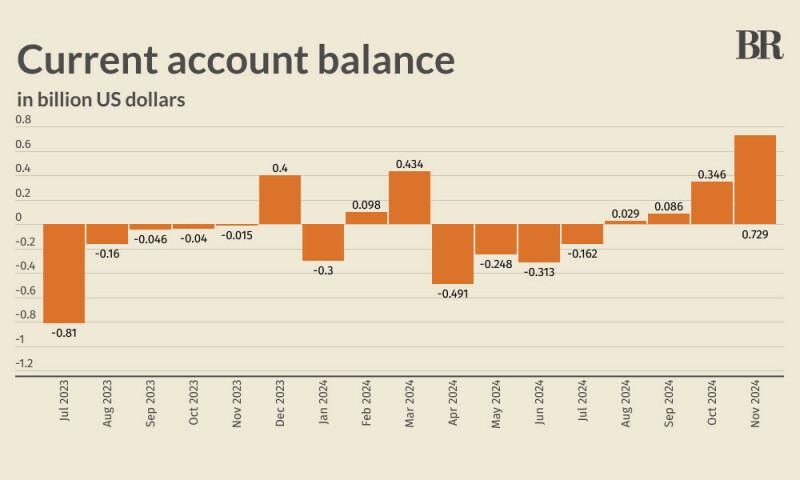Pakistan’s current account recorded a surplus of $729 million in November 2024, compared to a deficit of $148 million in the same month a year earlier, data released by the State Bank of Pakistan on Tuesday showed ( SBP).
This is the fourth consecutive month of current account surplus.
“This is also the second largest current account surplus based on available data since July 2013,” brokerage Arif Habib Limited (AHL) said in a note.
“The surplus was driven by a 4% year-on-year increase in total exports, which amounted to $3.5 billion, along with a 29% year-on-year increase in remittances. In addition, total imports decreased 7% year-on-year during the month,” the brokerage firm added.
Meanwhile, for October, the surplus was originally reported to be $349 million, but the SBP revised it in the latest data and put it at $346 million.
Overall, the figure takes Pakistan’s current account to a surplus of $944 million in the first five months of the current fiscal year (5MFY25), in contrast to a huge deficit of $1,676 million in the same period of the fiscal year. former.
Break down
In November 2024, the country’s total exports of goods and services amounted to $3,451 million, almost 4% more than the $3,327 million in the same month of the previous year.
Meanwhile, imports amounted to $4,964 million during November 2024, a drop of almost 7% annually, according to SBP data.
Workers’ remittances amounted to 2,915 million dollars, an increase of 29% compared to the previous year.
Low economic growth coupled with high inflation has helped reduce Pakistan’s current account deficit and an increase in exports has also contributed to the cause. A high interest rate, which has declined in recent months, and some restrictions on imports have also helped the authorities’ goal of reducing the current account deficit.
5MFY25
In 5MFY25, the country’s total export of goods and services amounted to $16.56 billion. While imports during the period amounted to $27.39 billion, according to SBP data.
Remittances from the country’s workers amounted to $14.77 billion, an increase of almost 34% compared to $11.05 billion in the same period last year.
The current account is a key figure for cash-strapped Pakistan, which relies heavily on imports to run its economy.
A growing deficit puts pressure on the exchange rate and depletes official foreign exchange reserves, while the situation is reversed.




